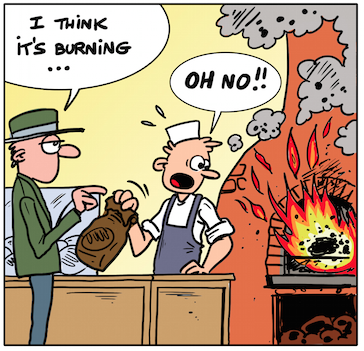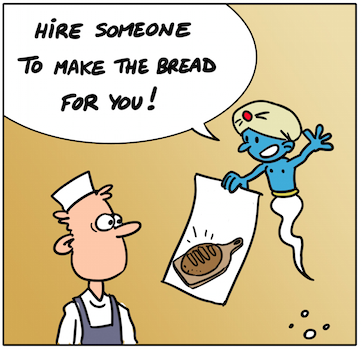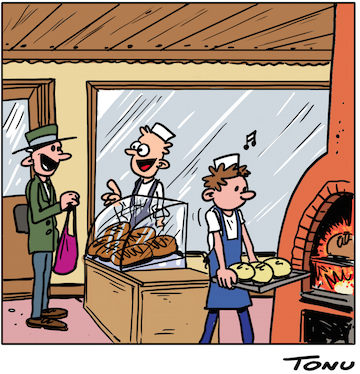-
The life cycle
The Product life cycle is made up of several stages: Design and make changes to the Model, Produce, Distribute, Use and Maintain.
The design and changes to the Model are part of the "Transformation" as we will see later, whereas the other 4 stages are part of the "Operations": we will first concentrate at the Operations.
-
The Product life cycle: Goods and Information
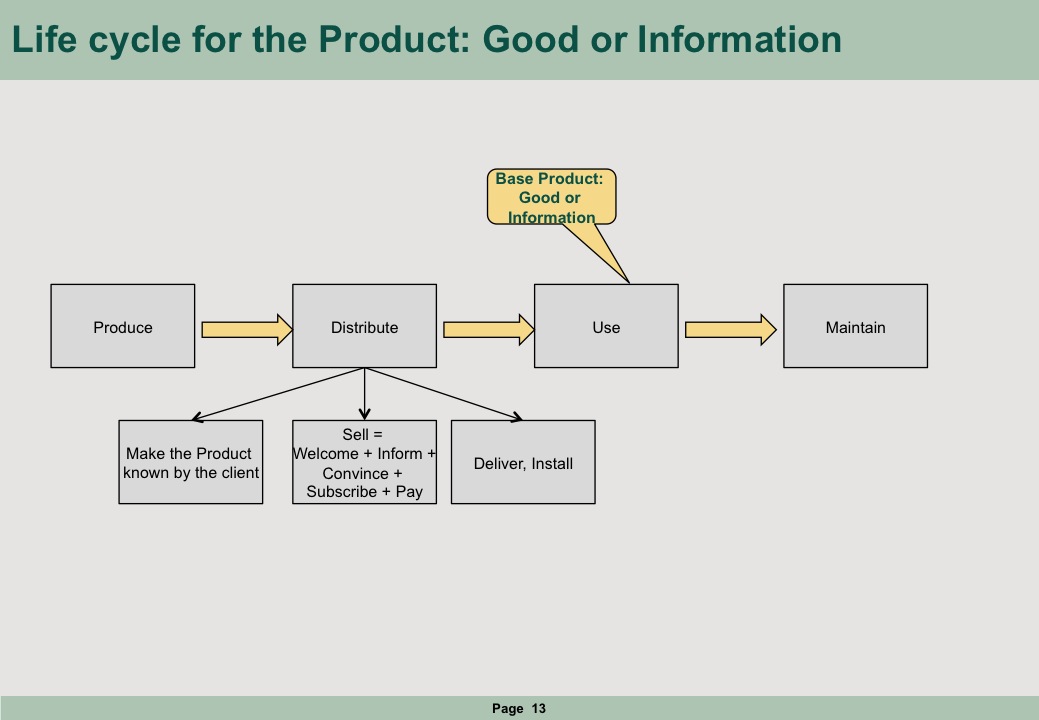
-
Produce
- Acquire production tools
- Use Component-Products purchased from other Enterprises
- Produce Goods or Information made available for
Distribution
-
Distribute
- Promote the Product and the Distributor
- Sell: welcome, convince, manage contracts, invoice, recover debts
- Make available: deliver, install
-
Use the Product
Basic Value
Using the Product enables the Customer to benefit from the basic Value.
As it happens, using a book generates the "pleasure of reading" Value.
Usability Value
What is the difference between buying a paper book or downloading the same book in an electronic format?
The book's content (Information) is the same (same basic Value), but the usability is not the same. Certain people prefer a paper format out of habit, or for the smell of the paper, or for the feel of the cover, or to make notes on the pages.
Others will prefer the electronic version to be able to easily carry their library around with them, to pay less, or to increase the font size.
-
Maintain
Goods may need, at a later date, to be updated, repaired, controlled and even disposed of... that we have grouped together under the term Development.
-
-
Service life cycle
The service life cycle is simpler because it is not storable.
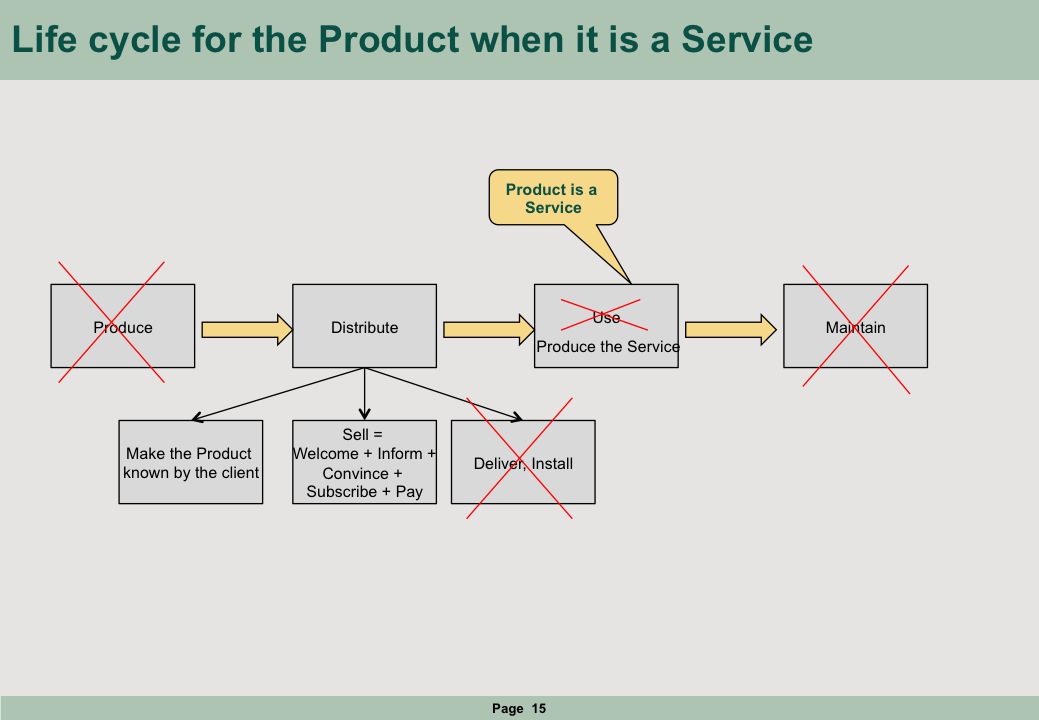
- Distribute: Promote the Service and Sell it
- Produce the Service
-
Manage the Resources and management
Production and Distribution Processes are the main Processes of the Enterprise.
But any Enterprise also needs to execute two other families of Processes to manage its Resources and steer the Enterprise.-
Manage the resources
Resources are necessary to execute the previous Processes: employees, partners, IT, finance, premises...
Operational Processes are needed to manage these Resources.
- Management of human resources
- Management of partners, such as distributors or suppliers
- Management of IT resources
- Management of financial resources
- Management of premises resources
-
Management
Managing the enterprise includes defining the operational objectives and their result: follow production and distribution levels, development of resources, accounts...
It also includes providing legal and statutory information (such as Financial Accountancy).
-

The story of George the Baker is made available under the terms of the
Creative Commons Attribution - NoDerivatives 4.0 International license.
